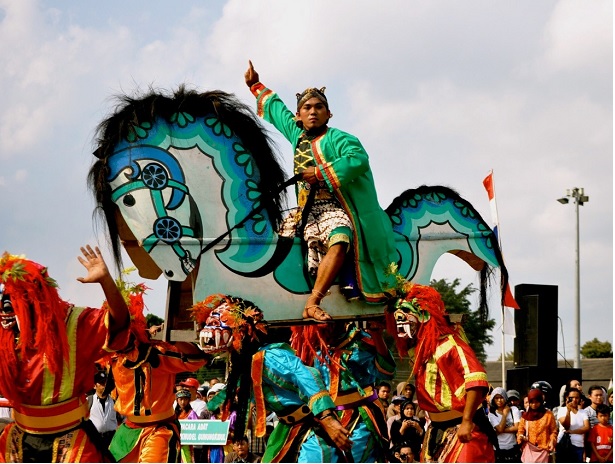In the month before the fasting period, Javanese Muslims perform a diversity of sacred rituals
Mark Woodward
In Indonesia the Muslim fasting month of Ramadan will begin on the evening of 23 March by most accounts, and by others on the evening when the New Moon is sited. Ramadan is a sacred time and the holiest month on the Islamic calendar. Muslims abstain from food, drink, smoking and all forms of sexual activity between sunrise to sunset. Other Ramadan events include festive fasting breaking meals – buka puasa or iftar in Arabic – special tarawih prayers, religious gatherings (pengajian) and Qur’an recitation in the evenings. On the last night of Ramadan there are torchlit processions, takbir keliling, in which groups of young people parade through the street of cities, town and villages chanting Allah Akbar (God is Great).
Syaban (Arabic Sha’ban), the month before Ramadan, is also a sacred time, especially in Java. The Sultanate of Yogyakarta in south central Java provides examples of the diversity of Syaban traditions. Syaban is the month of separation during which Muslims prepare for the rigors of the fast. This means stocking up on sweets, snacks and basic commodities for fast-breaking and for snacking during the very nearly all-night religious gatherings held during Ramadan. Two Syaban events are important religiously: Malam Nisfu Syaban and Nyadran, which is also known as Bersih Desa (cleansing the village). The first of these focuses on individuals, the second on Muslim communities. Indonesians often refer to these events as ‘Welcoming Ramadan.’ Javanese Muslims of all kinds – traditionalists associated with Nahdlatul Ulama, Muhammadiyah modernist and culturally oriented Javanists – participate in these rituals. Only Salafis who look to Saudi Arabian Wahhabis for religious and cultural guidance reject them.
Malam Nisfu Syaban is the night between the fourteenth and fifteenth of the month. It is often said that three hundred heavenly gates of mercy and forgiveness are open on this night, that Allah receives and acknowledges the good deeds of the faithful and answers their prayers on this night. It is sometimes known as the ‘night of forgiveness.’ Many people spend the night in prayer and reciting Surah Yasin, the chapter of the Qur’an most commonly associated with salvation and the afterlife. It is sometimes called ‘The Heart of the Qur’an.’ There is also a tradition according to which the Tree of Life is shaken on this night. It is believed that people whose names are written on leaves that fall from it will die in the coming year.
Nyadran
The purposes of Nyadran are twofold. First, to secure Allah’s blessing for the living and the departed. Second, to establish tranquillity and social solidarity in the community. Nyadran observances are held at cemeteries, many of which are located on the west side of mosques, during the last two weeks of Syaban. Some are small family gatherings. Others are mass gatherings including thousands of people. They are performed by communities of increasing levels of size and inclusivity ranging from small family groups to the Sultanate (which is also the provincial government) of Yogyakarta. The Sultanate holds Nyadran ceremonies at royal cemeteries and mosques and a procession in front of the kraton (palace). Large-scale Nyadran events, attract thousands of people of all ages, genders and social classes, and also include cultural performances such as wayang kulit (shadow plays) and kuda lumping (horse dances).
The basic components of Nyadran are cleaning and decorating graves, prayers for the departed (talilan), recitations of Yasin and Shalawat (Arabic and Javanese poems praising the Prophet Muhamad), processions to cemeteries and prayer meals (slametan).
Some Nyadran performances have changed little since I first saw them more than forty years ago. These are examples of cultural continuity. Others are remarkable examples of the cultural creativity that has emerged since the 1998 democratic transition.









Mark Woodward (mataram@asu.edu) is research professor at the Center for the Study of Religion and Conflict at Arizona State University.











